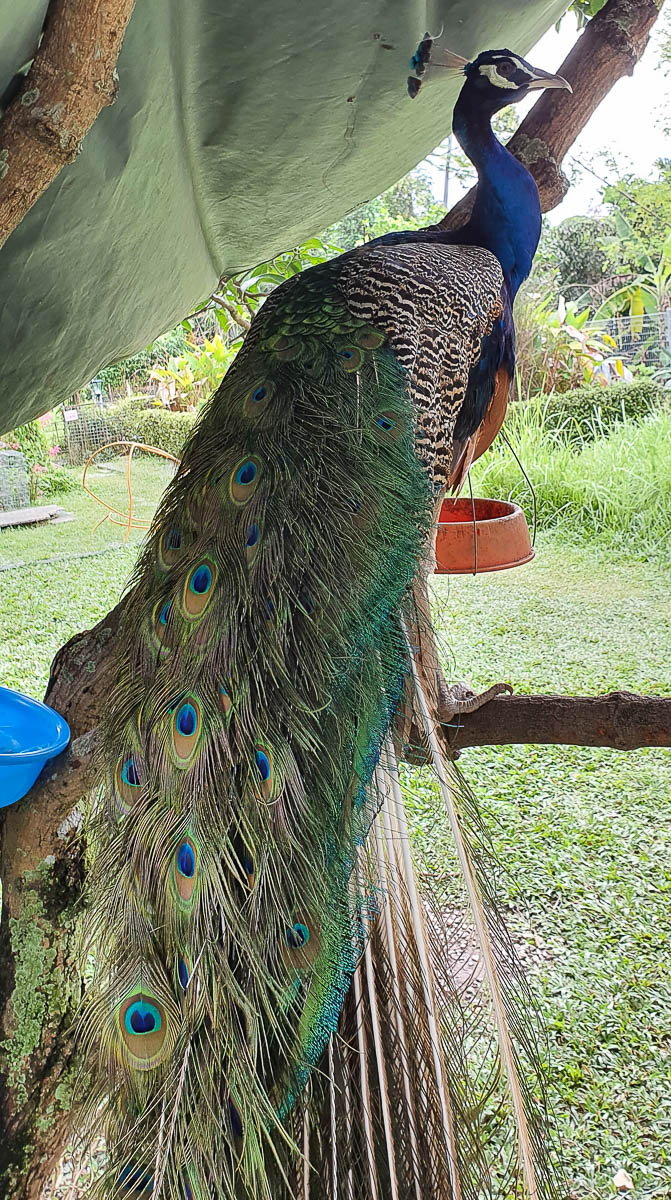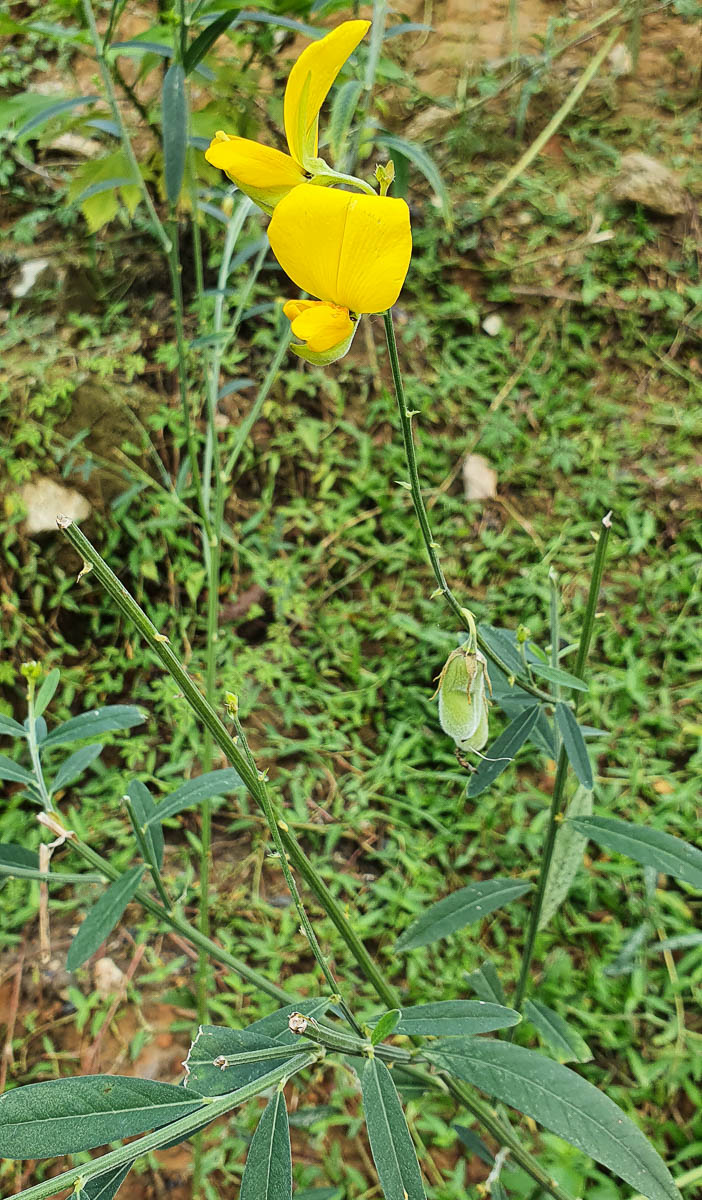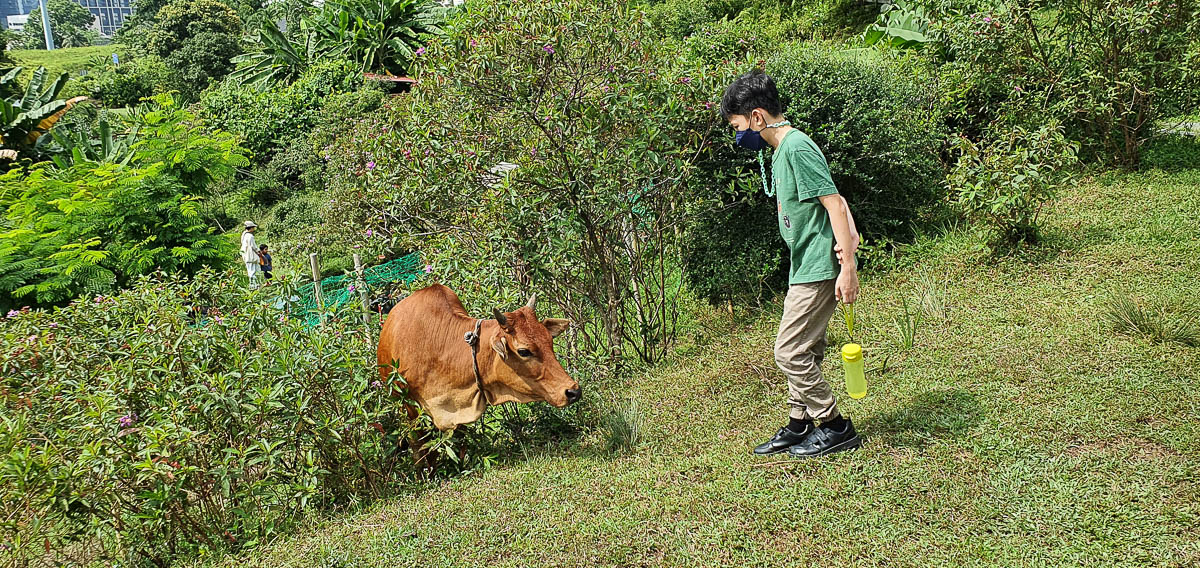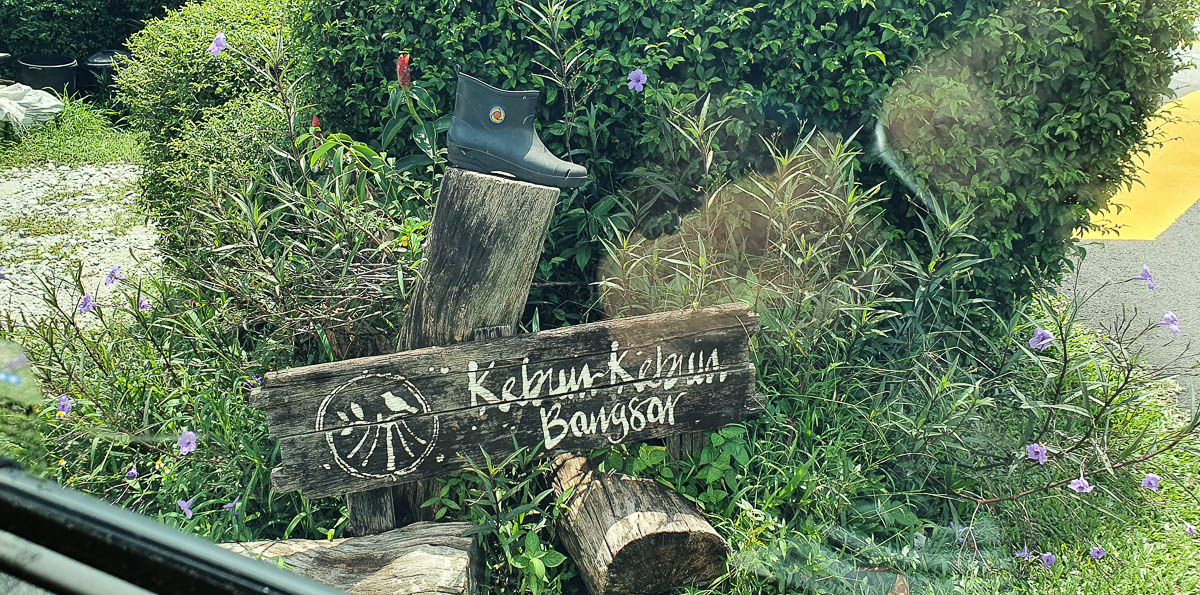Malaysian landscape architect Ng Sek San and a group of like minded friends had an idea six years ago, looking at the bare ground below high tension lines in Bangsar, Kuala Lumpur. After getting all the necessary permissions, Kebun Kebun Bangsar Community Garden became a reality.
Under his guidance and care, that empty space has grown into a beautiful patch of garden spread over about two and a half acres. We recently went for a visit to see for ourselves.
Visiting Kebun Kebun Bangsar
You’ll need to drive to reach Kebun Kebun Bangsar, located in Lorong Bukit Pantai, unless you decide to walk from Lucky Gardens or the Bangsar shopping area. There is a small space for parking (around 8 cars) beside the entrance, or you can park at Lorong Bukit Pantai 4 and enter via the back gate. From there, the garden slopes downwards to Lorong Bukit Pantai. We were lucky to find a space at the main entrance.
We spent about an hour and a half, wandering around, identifying various plants and talking to the animals. We recommend that you dress comfortably, with proper walking shoes. A hat is also a good idea. You can bring young children, but be prepared to do some carrying and don’t hope to push a stroller.
What’s there to see?
Many of the plants in the garden have interesting uses. Just inside the entrance, the sandpaper vine (Petrea Volubilis) looks amazing with its beautiful purple cascading blooms. The flowers attract lots of bees and the leaves really can be used as sandpaper. Traditionally, they’ve been used to polish the Malay kris to a high shine. Another beauty we spied was a gorgeous Heliconia ‘Sexy pink’ (Heliconia chartacea). The red and yellow variety are very common in local gardens, so this pale pink beauty stood out.
Different sections of the garden have gates separating them, so please be mindful that they need to be kept closed after you pass through. There is some help, they all have a weight to help them self close.
Just inside the second gate is a donation box, where you are free to drop in a small contribution to aid in the upkeep of the garden. This operates on a voluntary and honesty system. This section of the garden is a real education for the kids. A pair of geese move around freely interacting with visitors and a pair of tethered floppy eared goats. We soon spied the star of the garden, sitting quietly and rather majestically, in a nearby tree. A beautiful male peacock – officially an Indian peafowl (Pavo cristatus). Peacock does sound so much better, doesn’t it.

A mother duck was nesting in a little hut nearby, close to a stand of torch ginger (bunga kantan (Etlingera elatior). The flower buds are a very popular ingredient in various local and Thai dishes. Also keeping them company was a red junglefowl (Gallus gallus). This brightly coloured chicken is native to China and South East Asia and is the ancestor of all the domesticated chickens of the world.
Through the next gate we progressed to the veggie garden with a pretty Coral vine (Honolulu creeper (Antigonon leptopus)), which is a very useful flowering plant for attracting pollinators like stingless bees (Asian honey bee (Apis cerana)). But once you plant it, it must be carefully controlled and it grows very fast and will spread easily.
We also came across an interesting legume, which we were able to identify as Indian hemp (Crotalaria juncea). No medicinal properties mentioned, but it is used to improve soil properties, reduce soil erosion, conserve soil water, and recycle plant nutrients.

Not everyone loves the smell of Trailing Lantana (Lantana montevidensis) but the flowers are attractive. They also attract pollinators, as does the beautiful Mexican sunflower (Tithonia diversifolia).
At this point the climb becomes steeper and the space opens out. There are three very happily grazing cows in this area. They are tethered, and are happy munching away. They obviously are a good source of fertiliser, there is a nice pile that has been collected for drying out near the path. It doesn’t smell bad, in case you’re wondering. There’s lots of well digested plant material in there, so it’s really not smelly.

There’s some common water hyacinth (Pontederia crassipes) growing in a small pond on your right as you walk up. This is an invasive species which can quickly foul waterways and can damage a hydro electric power station if not carefully controlled. Right at the top of the garden under the watchful eye of the third bovine resident, is a hydroponic veggie house. They’ve just done some transplanting and you can easily see the progress through the semi transparent walls.
The end of the trail had another favourite – the shy plant (Mimosa pudica) nestling among the other grasses. Kids always find it fun to tickle and see the immediate response. Definitely a great way to spend some time on a weekend morning, out in the fresh air with lots to learn. Check out our video and some of the kids’ comments. Do also check Kebun Kebun Bangsar out on Facebook and Instagram.
images©ET







This Post Has 0 Comments